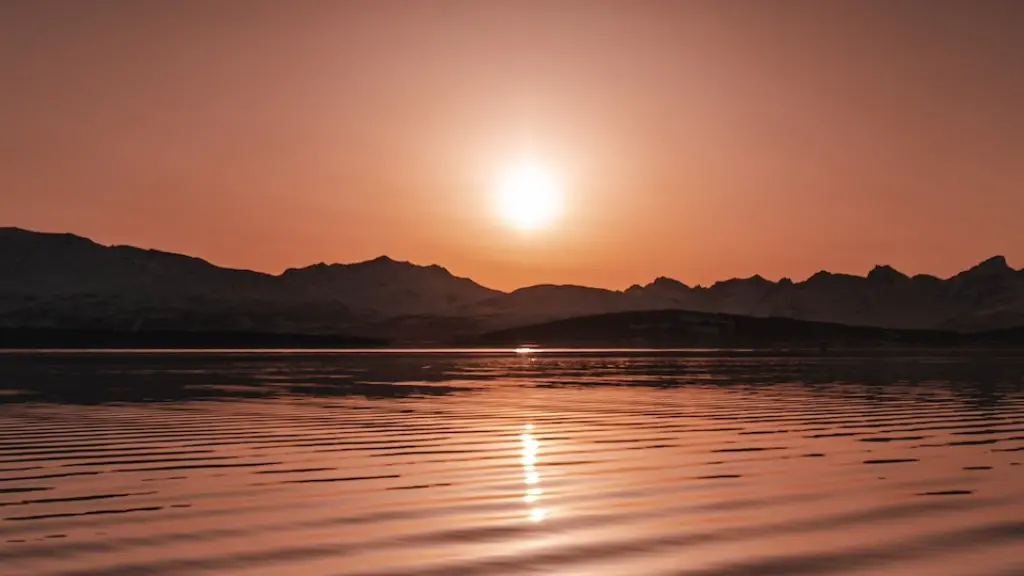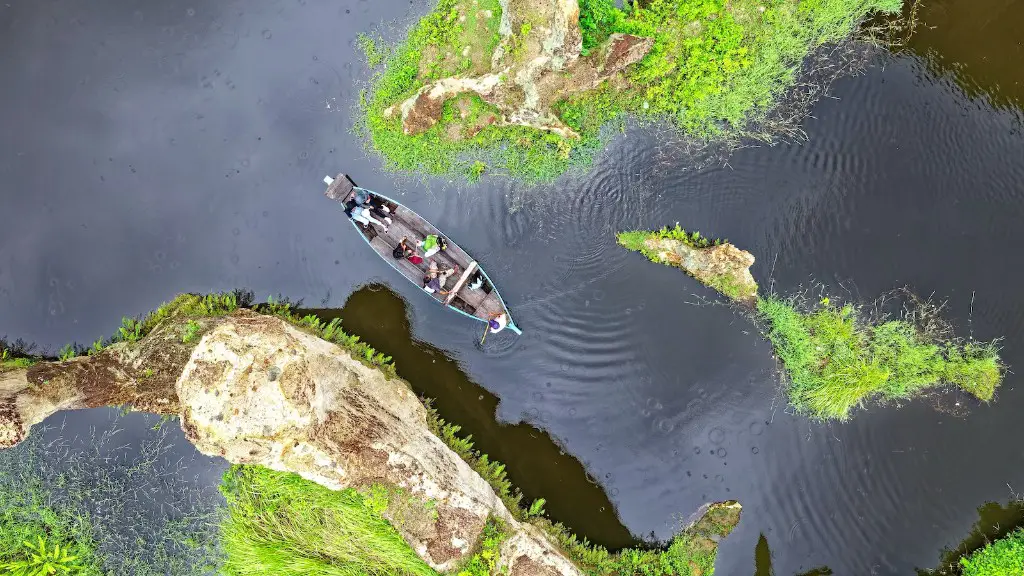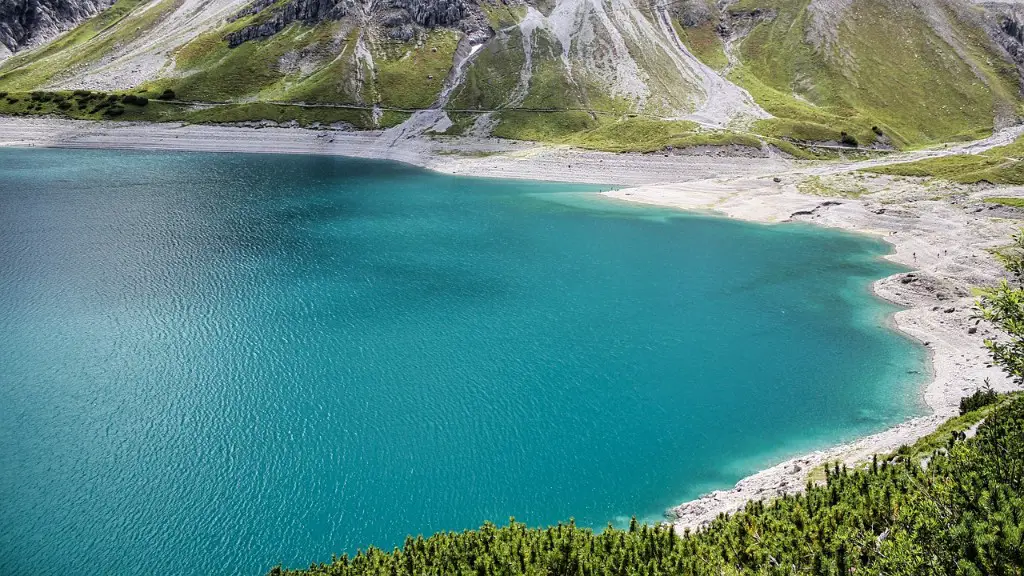Background Information
Lake Michigan is the only one of the five Great Lakes located entirely within the United States. It is bordered by four states: Wisconsin, Illinois, Indiana, and Michigan. Lake Michigan is connected to Lakes Huron and Superior by the Straits of Mackinac, as part of the natural series of lakes. Lake Michigan is the third largest of the Great Lakes and the largest of the Great Lakes that are entirely within the United States.
In the 17th century, French explorers opened up the Great Lakes region and gave the lake its name. The French were the first Europeans to make contact with the native people of the area and the first to name many of the lakes. The French called the lake “Lac des Illinois”, or “Lake of the Illinois”. This name reflected the people of the Illinois confederacy whose lands lay along the southern and western sides of the lake.
Etymology
The name “Lake Michigan” is believed to come from an Algonquian word meaning “great lake”. This could be a reference to the lake’s size or its profound depth. The lake is 290 miles long and 118 miles wide, covering an area of 22,400 square miles. The average depth of the lake is 279 ft., but it gets as deep as 923 ft. in some points.
By the late 18th century, the name “Lake Michigan” began to appear more frequently in maps and textbooks. Eventually, the name became accepted in popular usage as the official name of the lake.
The Impact of Lake Michigan on Local Economy
The local economy of the Great Lakes region is deeply intertwined with Lake Michigan. The lake provides training, fishing, and recreational activities for thousands of people. It also serves as an important transportation route for cargo vessels, which is valued at several billion dollars.
The lake also provides a key feature of the Midwest’s summer tourism economy with its many beaches, parks, and beach resorts. This is especially true in Michigan, where tourism accounts for $25 billion in direct spending and $1.1 billion in tourism taxes each year.
Preservation
The lake is an important natural resource, so its preservation is a major local priority. The lake is home to a diverse and complex ecosystem, which is why local governments, conservation organizations, and governments have put in place numerous rules and regulations for the protection of the lake’s environment. These include the Great Lakes Water Quality Agreement and the International Joint Commission Agreement.
The Great Lakes Water Quality Agreement works to protect the lake from pollution, erosion, and extinction of species. Governments have also adopted numerous laws to protect fish and wildlife in the lake, such as the Endangered Species Act.
The Role of Social Media
Social media platforms have become essential tools for lake management and lake protection. Organizations such as the Environmental Protection Agency and the Michigan Department of Natural Resources use social media to communicate with the public about important lake preservation initiatives, as well as to keep citizens informed and engaged in their actions.
A simple “like” or comment on a post on social media can be just enough to inform environmental advocates or conservation volunteers that an initiative is underway or an event is taking place. Even if an individual is far away from the lake’s shores, they can still help in the preservation of Lake Michigan.
Conclusion of Historical Significance
Lake Michigan has a long and fascinating history. For centuries it has been a critical transportation route and an important natural resource, but its beauty and attractiveness have made it a staple of our summer months and a bustling hub for recreation and tourism. While the name has changed over time, the lake’s impact on local communities and economies has always been significant.
Sustainable Use and Preservation
The preservation of Lake Michigan is a priority for many local, state, and federal agencies, as well as non-governmental organizations. The lake is a source of recreation and a key economic resource for many communities, so it’s important for citizens to be aware of the laws and initiatives in place to protect the lake. Social media has become an invaluable tool to inform people of stewardship opportunities that can help in the preservation of Lake Michigan.
Legislation and Policies
Local communities are taking action to ensure the sustainable use of Lake Michigan. Legislation and policies like the Great Lakes Water Quality Agreement and the International Joint Commission Agreement are at the forefront when it comes to protecting Lake Michigan. These agreements establish limits on pollution, regulate fishing, and provide measures to protect the lake’s environment.
State agencies and non-governmental organizations are also actively engaged in preserving Lake Michigan. These organizations conduct frequent environmental monitoring and advocacy efforts to ensure that the lake is managed properly.
Climate Change Impact
Climate change is a major issue for Lake Michigan, as it is for many bodies of water. The warming of the lake’s waters can cause an increase in the number of harmful algal blooms and decrease oxygen levels, which can have disastrous effects on the lake’s already-fragile ecosystem. Furthermore, the changing climate causes changes in the lake’s water levels, which can impact local economies.
To combat the effects of climate change, local governments are encouraging citizens to adopt eco-friendly behaviors and invest in clean energy. The WWF has established a Lake Michigan sustainable development program that focuses on greening the lake’s shoreline, increasing water quality, and protecting the lake’s biodiversity.
Education and Outreach
Local organizations and government agencies are aiming to educate the public on the importance of lake preservation. The Great Lakes Cruise Coalition, in collaboration with multiple environmental organizations, hosts educational cruises, which teach participants about the lake’s intricate ecosystem, history, and the human impacts on it.
These cruises provide a unique way for educators to engage with local communities to raise awareness about the significance of Lake Michigan. The Great Lakes Sea Grant Program also provides grants to universities that conduct public education and outreach activities regarding the lake.
Service Projects
Service projects that promote lake conservation are incredibly valuable. Conservation organizations, such as The Nature Conservancy and Alliance for the Great Lakes, offer volunteer opportunities that help to protect the lake’s environment. These opportunities range from beach cleanups to planting native species. By participating in service projects, the public can help ensure the long-term sustainability of Lake Michigan.


